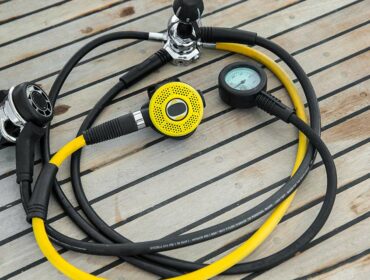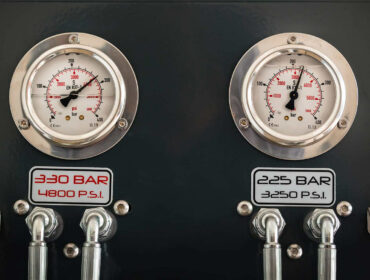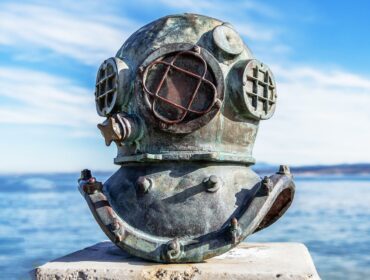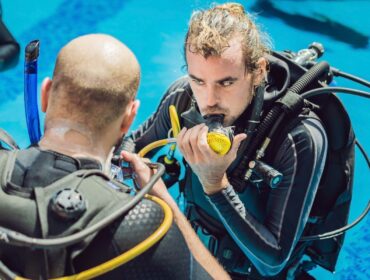Are you looking to purchase a Scuba Regulator? Choosing a Scuba Regulator is not as simple as it may seem. There are so many different types of regulators to choose from that we put together a few tips and explanations of commonly used terms in Scuba Regulators to make the selection process easier.
DIN or International A-Clamp?
One of the most basic decisions a Scuba Diver has to make while selecting a Regulator first stage is what kind of tank connection fitting it should have. Essentially, there are two types of tank fittings: DIN and International.
The “International” fitting is also known as “Yoke” or “A-Clamp” or sometimes simply as “Clamp.” The International fitting is older and the most widely used type of connector for attaching the vertical tank valve to the regulator’s first stage. It resembles an uppercase “A” and has a screw on the top to tighten the valve to the tank, as well as a horizontally mounted release valve to turn the air to the first stage on or off. While A-Clamps or International are more widely used worldwide, they cannot contain pressure greater than 232 bar, after which the o-ring can over-pressurize, which is why the newer, safer DIN connectors are gradually replacing them.
DIN or Deutsches Institut für Normung (German Institute for Standardization) is a newer method utilizing a screw fitting to mount the first stage to the cylinder. Instead of the regulator clamping onto the outside of the cylinder valve, it screws into it. The O-ring is contained internally, well protected, and the screw threads allow tank pressures of up to 300 bar. DIN fittings are being more widely implemented worldwide, especially by technical divers.
The type you opt for depends entirely on the places you dive the most. We recommend you buy a DIN regulator and an adapter that can convert the DIN to an A-Clamp if the dive shop at your destination doesn’t support DIN. However, if you have an A-Clamp type regulator and the Dive Shop only provides DIN tanks, then you have a problem. A-Clamps can be converted by dive shops to DIN but at a price.
Nitrox or Air?
While it might appear so, not all regulators are Nitrox ready unless the manufacturer specifically states it as a Nitrox Ready Regulator. So, what makes a Nitrox regulator different from an ordinary one? Well, not much, but To be ‘nitrox ready,’ manufacturers must ensure that the regulator and all its components can handle a higher than regular O2 content and will not react with the oxygen corroding parts or cause combustion. Nitrox regulators also need to ensure the regulator is contaminant-free and that lubricants or grease used are O2 “friendly.” EAN Regulators also have thicker O2 corrosion-resistant O-rings that are specially colored green to differentiate them from the regular ones. Always check the EAN percentage of your nitrox regulator as some offer EAN 23% and others up to 40%. Titanium regulators are not suitable for use with nitrox. Nitrox regulators need to be oxygen cleaned each year to keep them contaminant-free at least once annually or more frequently if contaminated with unclean air, which can increase the ongoing maintenance costs.




